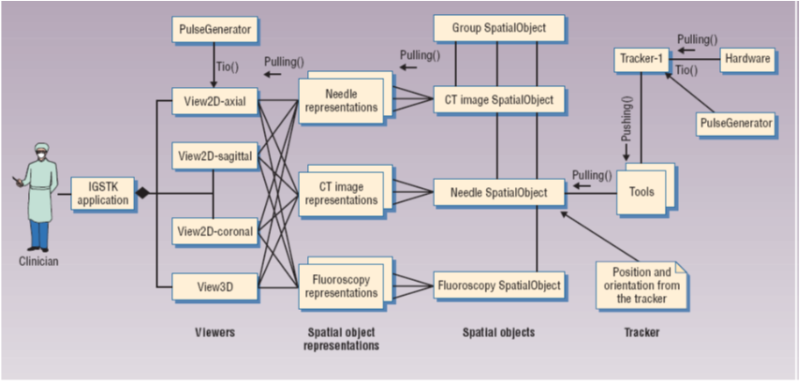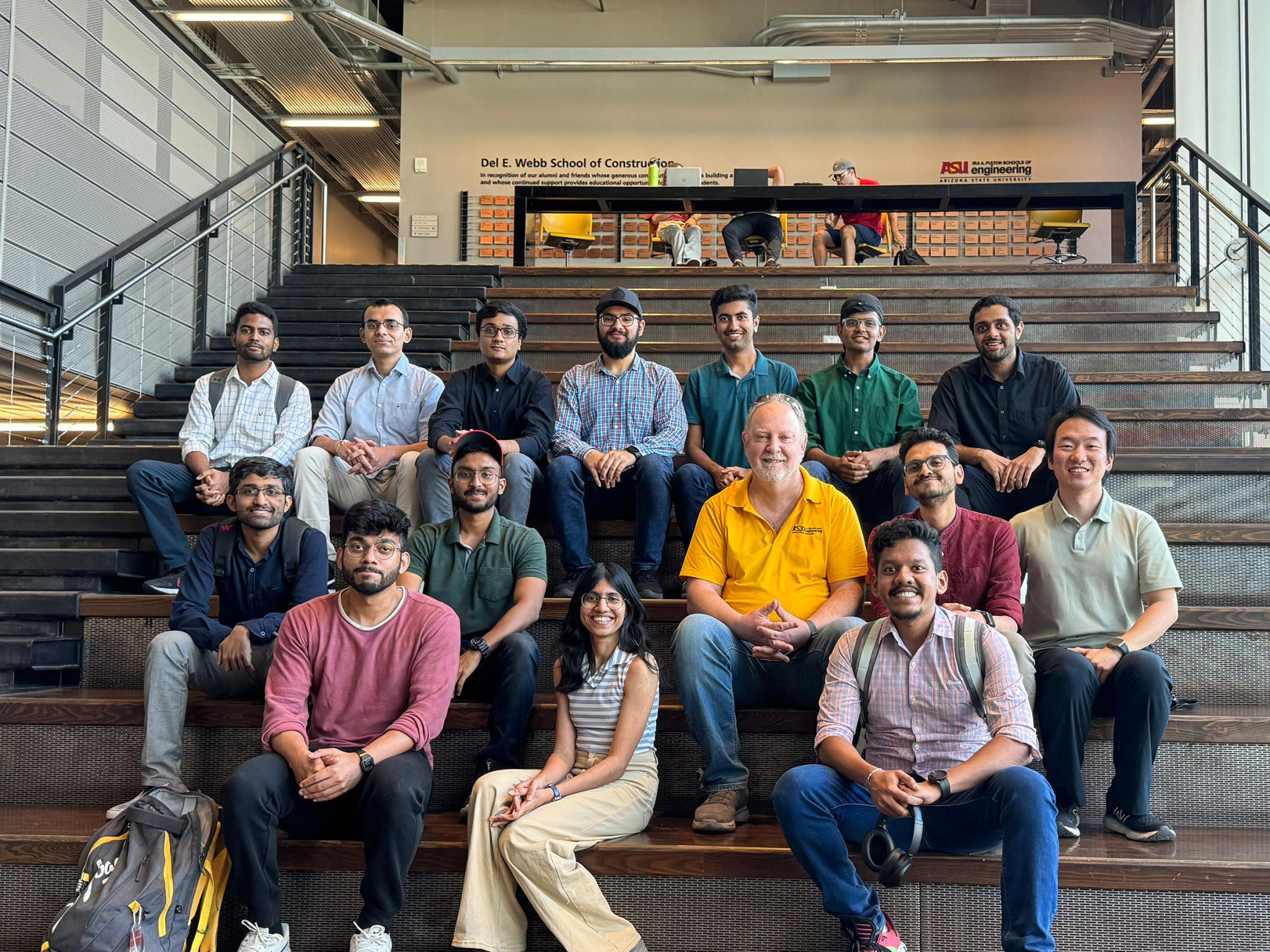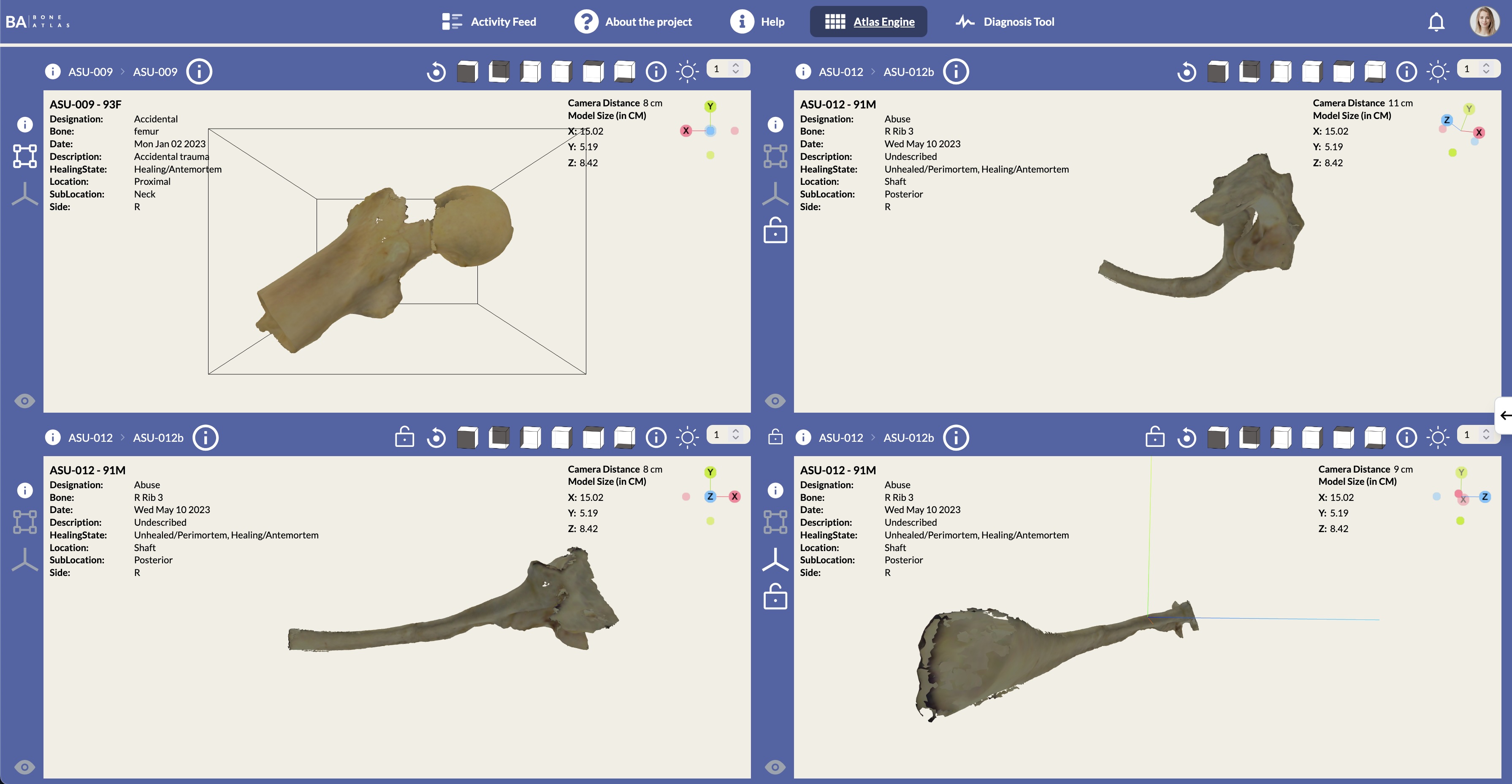Research
My general area of research is software engineering; within this field I am currently interested in Agile and Lean Software Engineering, Open Source Software, Software Engineeringh Education, and software engineering for educational technology and for healthcare applications.
My research methods are use-inspired, meaning I look for new contexts of use for software technologies, and adapt or discover how software engineering principles apply. Therefore my work tends to be multidisciplinary and evolutionary; multidisciplinary in my collaborations, evolutionary in that my approach is to start with specific problems and work towards more general methods.I am presently most active in agile and lean software engineering, re-examining traditional software engineering axioms in the context of a new way of doing software. To this end my students have worked on Agile Regression Testing, Technical Debt impact on open source software projects, and how the principles of flow apply in open source. I also remain active in all areas however, with funded projects in educational technology and healthcare.
I am also engaged in the scholarship of teaching and learning, specifically in the context of software engineering education. A decade ago I created the Software Enterprise as both a hybrid project-based pedagogy for accelerating contextual understanding and industry preparedness of our students, and as an encapsulated set of modules for practical training of software engineering skills for students. The Enterprise now forms the project spine of the B.S. and M.S. degrees in Software Engineering degree at ASU. I am currently examining how Agile approaches can improve the way we teach and learn in an on-demand world.

Research Projects, Interests, and Activities (click image to expand)
-

The Software Enterprise at ASU’s Polytechnic Campus uses a project spine experience as a multi-year instructional vehicle exposing students to methods and tools prevalent in today’s software practice. The Software Enterprise has been the central curricular design feature of the B.S. in Software Engineering at ASU (an ABET-accredited program) for two decades. The Enterprise puts in to practice Kohl's Experiential Learning model (1984) by incorporating theory, active learning, and reflection in frequent agile feedback cycles.
Selected Publications
- Gary, K. “Project-based learning”, IEEE Computer (48):9:98-100 ed. Sobel, A.K. September 2015.
- Gary, K., Lindquist, T., Bansal, S., and Ghazarian, A. “A Project Spine for Software Engineering Curricular Design”, Proceedings of the 26th Conference on Software Engineering Education \& Training (CSEET 2013), Co-located with ICSE 2013, San Francisco, CA, May 2013.
- Gary, K. “The Software Enterprise: Practicing Best Practices in Software Engineering Education”, The International Journal of Engineering Education Special Issue on Trends in Software Engineering Education, Volume 24, Number 4, July 2008, pp. 705-716.
- Gary, K., “The Software Enterprise: Preparing Industry-ready Software Engineers” Software Engineering: Effective Teaching and Learning Approaches, Ellis, H., Demurjian, S., and Naveda, J.F., (eds.), Idea Group Publishing. October 2008.
- Tvedt, J., Tesoriero, R., and Gary, K., "The Software Factory: Combining software engineering and computer science undergraduate education" Proceedings of the 23rd International Conference on Software Engineering (ICSE 2001), May 2001. (acceptance rate 18%)
I believe in applying Agile concepts to education. Particularly in a fast-moving field like software engineering, it is important to remain flexible and adapt to change. That change is all around us - from technology change, software engineering practices change, and most importantly how our student learners change. To that end I believe frequent freedback aligned with an "inspect and adapt" approach is the best way to respond to these changes. My more recent research in SEE focuses on ways to measure and adapt to change - in the classroom and online.
Selected Publications
- Das, S., and Gary, K. A. (2024, June). Developing an Agile Mindset in Software Engineering Students. In 2024 ASEE Annual Conference & Exposition.
- Gary, K. A., and Xavier, S. Agile learning through continuous assessment. In 2015 IEEE Frontiers in Education Conference (FIE) (pp. 1-4).
- Gary, K. “Running an Agile Class”, Proceedings of the 2014 International Conference on Frontiers in Education: Computer Science and Computer Engineering, Las Vegas, NV, July 2014.
- Gary, K., Verma, S., Nagappan, Y., and Branaghan, R. “Assessing Evolving Conceptual Knowledge in Software Engineering Students” Proceedings of the National Conference of the American Society for Engineering Education (ASEE 2012), San Antonio, TX, June 2012.
Finally, as an experienced Software Engineering educator, I've been able to share multiple relevant experiences developing programs and curricula for software engineering, most recently in an online context.
Selected Publications
- C1. Gary, K., LaPlace, C., Rupak, V., Modi, R., and Vaida, Karthik. “SUCCESS: A Summer Camp Promoting On-campus Connections in Software Engineering”, The National Conference of the American Society for Engineering Education (ASEE 2025), Montreal CA, June 2025. Best Paper*
- Gary, K. “The Impact of COVID-19 in an online and on-campus Software Engineering program,” In the 2024 American Society for Engineering Education Pacific-Southwest Regional Conference. Las Vegas, NV, April 2024.
- Gary, K. A. (2022, August). Software Engineering and Security: Lessons Learned Creating a New Course in Security from a Software Engineering Perspective. In ASEE Annual Conference and Exposition, Conference Proceedings.
- Gary, K. (2022, May). Project-based Pedagogy Online: Challenges in online software engineering education. In Proceedings of the First International Workshop on Designing and Running Project-Based Courses in Software Engineering Education (pp. 25-26).
- Gary, K. A., Acuna, R., Mehlhase, A., Heinrichs, R., and Sohoni, S. (2020). Scaling to meet the online demand in software engineering. International Journal on Innovations in Online Education, 4(1).
- Mehlhase, A., Heinrichs, R., and Gary, K. (2019). Effective use of Slack and short video to scale online learning communities. In Proceedings of the Frontiers in Education of Computer Science Conference (FECS).
- Gary, K. A., Sohoni, S., and Lindquist, T. (2017, November). It's Not What You Think: Lessons Learned Developing an Online Software Engineering Program. In 2017 IEEE 30th Conference on Software Engineering Education and Training (CSEET) (pp. 236-240). IEEE.
Funding
- “SUCCESS: A Survey of Computing, Coding, Engineering, and Software Systems”. State Farm Community Grant $20K (PI 100%) 2023-24.
- “Training IT Engineers in Secure Software Development”. State Farm Community Grant, $25K (PI 100%) 2019-20.
- “The Software Enterprise: A Reinforcing Pedagogical Model for Software Engineering”, National Science Foundation Course Curriculum and Laboratory Improvement program (Phase I). Sole PI, $148,344. 2009-2012.
- “Jazz Innovation Awards”, IBM. Co-PI (H. Koehnemann), $25,000, 2009.
- “Agile Methods for Entrepreneurship: The AME Project”, ASU Pathways to Entrepreneurship Grant (PEG), supported by the Kaufmann Foundation, $39,731. Primary PI (with Al Kagan). July 1, 2008 to June 30, 2009.
- "The Software Enterprise: Preparing Industry-ready Software Engineers". Arizona Board of Regents Learner-Centered Education Program. $24,041. Co-PI with Barbara Gannod. 2005-2007.
-

I strive to remain connected to the professional community, through use-inspired research, teaching that connects to practice, consulting, and participation in the local developer community. As such I have a long history working with agile methods, open source software, and web (now mobile) software development, in academia and in industry.
My research interests derive directly to issues I see impacting software developers everyday. How does one scale agile methods? or apply them to safety-critical software? How does an open source community function? How does technical debt impact open source software projects? How can we effectively regression test in an continuous delivery ecosystem?
Selected Publications
- Chakraborty, A., Das*, S., Gary, K. (2025). Machine Learning Operations: A Mapping Study. In: Arabnia, H.R., Deligiannidis, L. (eds) Software Engineering Research and Practice and e-Learning, e-Business, Enterprise Information Systems, and e-Government. CSCE 2024. Communications in Computer and Information Science, vol 2263. Springer, Cham. https://doi.org/10.1007/978-3-031-86644-9_1
- Das, S. and Gary, K. “Communication in Agile Software Development - A Mapping Study”, The 19th International Conference on Scientific Computing (CSC 21). Las Vegas, NV. July 2021.
- Das, S. and Gary, K. “Agile Transformation at Scale: A Tertiary Study”, 2021 Workshop on Agile Transformation and Large-scale Agile, XP 2021 Conference, (virtual) June 2021
- Gary K., Yaniv, Z., Guler, O. Cleary, K., and Enquoharie, A. “Source Code Control Workflows for Open Source Software”, Proceedings of the 13th International Conference on Software Engineering Research and Practice, Las Vegas NV, July 2014.
- Gary, K., Kokoori, S., Muffih, B., Enquobahrie, A., Cheng, P., Yaniv, Z., and Cleary, K. “Agile Methods for Safety-Critical Open Source Software”, Software: Practice and Experience, April 2011.
- Gary, K., Koehnemann, H., Blakley, J., Goar, C., Mann, H., and Kagan, A. “A Case Study: Open Source Community and the Commercial Enterprise”, The IEEE 6th International Conference on Information Technology: New Generations (ITNG 2009), Las Vegas, NV, April 2009.
- Naccache H., Gannod G., and Gary, K. "A Self-Healing Web Server Using Differentiated Services", Proceedings of the 4th International Conference on Service Oriented Computing (ICSOC 2006), Chicago, IL, Dec. 2006. (acceptance rate 17%).
- Kempf, K.G., Uzsoy, R., Smith, S.F., Gary, K. “Evaluation and Comparison of Production Schedules”, Computers in Industry 42, 203-220, 2000.
Funding
- Gary K. “Open Source Evaluation for the OS-URAVS Program”, Open Source Unmanned Remote Autonomous Vehicle Systems Program, $10K. 2014
- Crossover Resolution over Complex Images and Development of Corpus”, National Geospatial-Intelligence Agency ATP program. PI: Anshuman Razdan, Director, I3DEA Lab. Total Amount $150,000, 20% Co-PI ($30,000).
- Workflow Automation through Open Source Enterprise portals”, Unicon Inc. $13,467. August-December 2007.
-

For details on mHealth research, please go to the mHealthResearch page.
The Image-Guided Surgical ToolKit (IGSTK) was an NIH-funded open source surgical toolkit for image-guided surgery. the platform was created using agile methods and safety-by-design to produce a open application development platform. The toolkit was developed by a team of developers in the open source community, and led by Kevin Cleary, Patrick Cheng, and Ziv Yaniv from Georgetown University Medical Center and now Children's National Health System, and Luis Ibanez, Julien Jomier, and Andinet Enqouharie, Kitware Inc.
ASU's involvement was primarily to support software engineering practices on the project, including requirements engineering (with Brian Blake, University of Miami), agile methods, open source code management, and software architecture validation.
Selected Publications
- Muffih, B. and Gary, K. “Global State Validation in a Component-based Architecture”, Proceedings of the 9th Conference on Software Engineering Research and Practice (SERP’10). Las Vegas, NV, July 2010
- Gary, K., Kokoori, S., David, B., Otoom, M., and Cleary, K. “Architecture Validation in Open Source Software” Proceedings of ROSATEA 2007: The Role of Software Architecture for Testing and Analysis, Boston MA, July 2007.
- Enquobahrie, A., Cheng, P., Gary, K., Ibanez L., Gobbi D., Lindseth, F., Yaniv, Z., Aylward, S., Jomier, J., and Cleary, K. “The Image-Guided Surgery Toolkit IGSTK: An Open Source C++ Software Toolkit” Journal of Digital Imaging, August 2007. Selected as the Best Paper – Second Place for the Journal of Digital Imaging, Volume 20 2007.
- Gary, K., Andinet Enquobahrie, Ibanez, L., Cleary, K., Cheng, P., and Yaniv, Z. “The Development of the Image-Guided Surgical Toolkit (IGSTK): An Open Source Package for Medical Interventions”, Workshop on Software and Systems for Medical Devices and Services (SDMS’07) at the Real-time Systems Symposium (RTSS’07), Tucson, AZ, December 2007.
- 39. Gary, K., Blake, B., Ibanez, L., Gobbi, D., Aylward, S., and Cleary, K. “IGSTK: An Open Source Software Platform for Image-Guided Surgery” IEEE Computer Special Issue on software engineering and application of software-based medical devices and device systems, April 2006.
- 30. Blake, M.B., Cleary, K., Ranjan, S., Ibanez, L., and Gary, K. “Use Case Driven Component Specification: A Medical Applications Perspective to Product Line Development” ACM Symposium for Applied Computing (SAC2005), Santa Fe, NM, March 2005.
Funding
- “Continued Development for the Image-guided Surgical Toolkit (IGSTK)” NIH program PAR05-057 “Continued Development and Maintenance of Software”. PI: Kevin Cleary, Ph.D. ISIS Center, Georgetown University Medical Center. ASU tasked under “State Machine Validation” (subcontract PI K. Gary) $146,852 for 3 years. Review panel score 129 (top 2.5% of reviewed proposals) (NIH’s old scoring, range 100-500, lower scores better).
- “Image-Guided Surgery Toolkit”. Georgetown University Medical Center (subcontract from NIH STTR), $72,436. 2005-06
-

I spent several years in industry as a software architect for eLearning platforms, and have brought that interest back into academia. I enjoy building and reviewing educational technology platforms as a means of contributing to student learning.
Presently I am part of an ASU team integrating a Virtual Reality application for medical training in the field for the Army into the Generalized Intelligent Tutoring Framework (GIFT). Previously I worked with Dr. Scotty Craig as part of an ASU team to support the Pervasive Learning Enviroment for ADL (ADL-PERLS).Selected Publications
- Craig, S. D., Gary, K., Gorman, J. C., Verma, V., & LiKamWa, R. “A Synthetic Training Environment for Assessing Changes in Team Dynamics with the Generalized Intelligent Framework for Tutoring.” In Generalized Intelligent Framework for Tutoring (GIFT) Users Symposium (GIFTSym12). Orlando FL, August 2024.
- Dass, S. and Gary, K. (2021). Predicting Student Dropout in Self-Paced MOOC Course Using Random Forest Model. MDPI Informatics, Special Issue on Artificial Intelligence Applications for Education.
- Sandy, D., Gary, K., and Sohoni, S. “Impact of a Virtualized IoT Environment on Online Students”, Proceedings of the ACM/ASEE/IEEE Frontiers in Education Conference (FIE’20), (held virtually) 2020.
- Tirkey, A., and Gary, K. A. (2017). “Curricular change management with Git and Drupal: A tool to support flexible curricular development workflows.” In Software Engineering Research, Management and Applications (SERA), 2017 IEEE 15th International Conference on (pp. 247–253). Greenwich, UK, June 2017.
- Xavier, S., Murphy, C., and Gary, K. “A Student Activity Dashboard for Ensuring Project-based Learning Compliance”, Proceedings of the National Conference of the American Society for Engineering Education (ASEE 2016), New Orleans, LA, June 2016.
- Mandal, S. and Gary, K. “Distributed Version Control for Curricular Content Management”, Frontiers in Education 2013 (FIE’13), Oklahoma City, October 2013.
Funding
- “Synthetic Team Training and Evaluation Environment”, US DoD, $1,390,692 (Co-PI 20%), 2023-2026.
- “An evaluation of the PERvasive Learning System from an End-User Perspective”. Advanced Distributed Learning Initiative (PI Craig, 10% share) $1,139,149. 2019-21.
- Skeletal Atlas of Elder Abuse: Establishing Markers of Physical Abuse and Developing a Digital Diagnostic Tool for Education and Screening”. Dept. of Justice (PI Bolhofner, Co-PI 30%) $1,035,238, 2021-25.
- “Creating an IoT Learning Platform for the Future”. State Farm Foundation, $20K (PI) 2019-20.